Isolated strength workouts are good. Efficient workouts that promote muscular balance are even better. Enter: compound movement exercises, an effective way to build total-body strength, improve joint health, burn calories, and shake up your routine. If compound movements aren’t already part of your workouts, they should be — and we’re here to tell you why.
We’ll cover:
- The health benefits of compound movement workouts
- The six major compound exercises to build full-body strength and stability
- Injury prevention exercises to support compound workouts
What is a compound movement?
Compound, or multi-joint, exercises are movements that engage two or more primary joints. For example: squats engage the hips and knees. Other compound movements include upper-body exercises like bench press, bent-over rows, and push-ups, and lower-body exercises like lunges and Romanian deadlifts.
The benefits of compound movement exercises
At a high level, the benefits of compound exercises include:
- Higher calorie burn compared to single-joint exercises
- Increased strength and stability
- Injury prevention
- Improved functional movement
- Time efficiency
Many compound movements are also functional exercises, so becoming stronger and more proficient in those movements (ideally with the help of an Anytime Fitness Coach) reduces the risk of injury from daily activities, such as carrying in a heavy load of groceries.
Isolation vs. compound exercises
Isolation exercises target specific muscles, so they’re beneficial for strengthening weak muscle groups and correcting muscle imbalance (unlike compound exercises, which are bilateral, meaning they work both sides of the body at the same time).
If you only focused on compound exercises, your body would build muscle, but you could be missing out on the benefits of isolation exercises (aka single-joint movements). They recruit smaller amounts of muscle mass and only one joint. For example: bicep curls require a hinge at the elbow.
This isn’t a sign to abandon bicep curls (we’d never ask that!), but instead a reminder prioritize compound movements like pull-ups and save bicep curls for later in your workout.
Functional vs. compound exercises
You know functional training, exercises that mimic everyday movements and activities, including pushing and pulling with the upper body, squatting, hinging at the hips, lunging, stepping up or down, and rotating. Functional exercises involve one or more of these movement patterns. Sound a lot like compound exercises? You’re not wrong — there’s a lot of overlap and functional movements are also compound lifts because squatting, hinging, pushing, and pulling are multi-joint exercises.
Need a recap? Read more: What Is Functional Training? How to Make Everyday Tasks Easier
The 6 major compound lifts (plus injury prevention exercises) for strength and stability
These six compound exercises are the gold standard for mastery in any fitness program because they form the foundation of functional movement and lead to a wide range of exercise variations. The results: improved strength, power, joint health, and ability to do everyday activities.
Note: Safely performing compound movements requires stability and strength in the joints. For example: scapular stability is critical for pull-ups. So, make sure you’re incorporating stability exercises into your routine for better joint health and efficient movement.

Which muscle groups do compound movement exercises target?
Muscles do not work alone, especially during compound exercises. Instead, the working muscles are divided into three categories during each movement:
- Agonists: The muscles that are the prime movers during exercises.
- Synergists: The muscles that support movement.
- Stabilizers: The muscles that provide stability (as the name implies).
Compound movements primarily target agonist muscles, but they also strengthen the synergists and stabilizers. Here are form tips the six major compound movement exercises, along with the muscles they work and their corresponding stability exercises.
Barbell back squat
Functional movement pattern: Squat
Muscles worked: Quads, glutes (agonists), hamstrings (synergists), transverse abdominis (stabilizer)

Form tips:
- Stand upright with the barbell on the back of your shoulders. Keep your feet flat and shoulder-width apart.
- Lower your body toward the floor, sending your hips back and down while bending your knees.
- Push through your heels to return to the starting position. Keep your back flat and head up throughout the movement.
Stability exercise: BOSU squat
Muscles worked: Same as traditional squat, plus core (rectus abdominis, obliques)
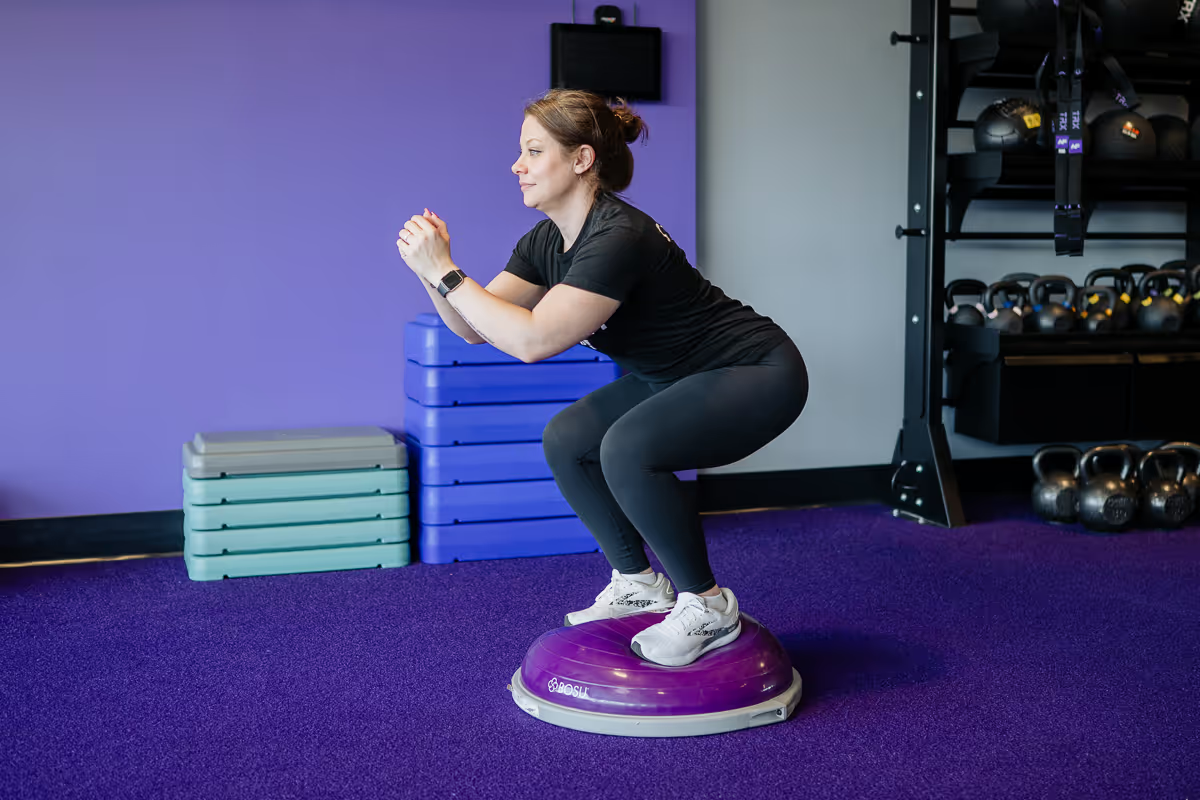
Form tips:
- Stand on the BOSU ball with your feet shoulder-width apart.
- Bend at the hips and knees, lowering your body as if you’re sitting in a chair.
- Slowly push up through your feet to return to the starting position.
Barbell deadlift
Functional movement pattern: Hip hinge
Muscles worked: Glutes (agonists), hamstrings (synergists), erector spinae, transverse abdominis, obliques (stabilizers)

Form tips:
- Begin in a shoulder-width stance with the bar lined up over your feet.
- Hinge your hips back and flex your knees.
- Grab the barbell with a flat back and straight arms.
- Drive your hips forward, lifting the weight off the floor with your shoulders back.
- Come to an upright position.
- Hinge your hips back to lower the weight back to the starting position.
Stability exercise: Single-leg deadlift
Muscles worked: Same as traditional deadlift, plus core (transverse abdominis, obliques), back extensors, and hip stabilizers
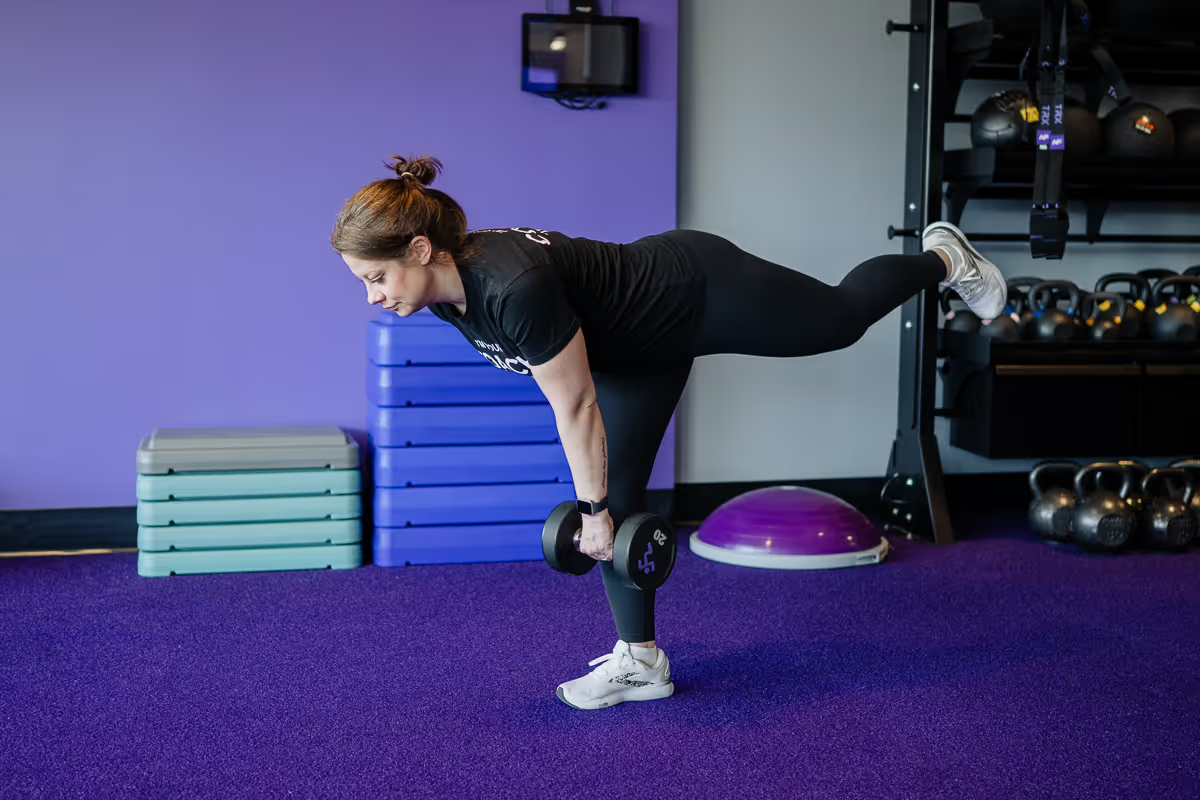
Form tips:
- Hold a dumbbell in one hand. Stand with all your weight on the opposite leg and the other leg slightly off the ground.
- Keeping your back flat and core engaged, slowly lower the dumbbell toward the ground by hinging at your hips. Allow your non-working leg to travel behind you and keep your chest up.
- Slowly return to the starting position, hinging at the hip to raise the dumbbell back up. Avoid swaying or swinging the dumbbell.
- Complete all reps on one side before switching to the other.
Barbell bent-over row
Functional movement pattern: Horizontal pull
Muscles worked: Latissimus dorsi (agonist), posterior deltoid, biceps (synergists), rotator cuff (stabilizer)

Form tips:
- Hold a barbell with your arms straight and bend forward at your waist with your knees slightly bent and your back flat.
- Lift the barbell to your chest, bending at your elbows.
- Lower the barbell back to a straight arm position, keeping your back flat throughout the movement.
Stability exercise: Single-arm TRX row
Muscles worked: Same as bent-over row, plus core (rectus abdominis, obliques), shoulder stabilizers (rhomboids, traps), and rotator cuff
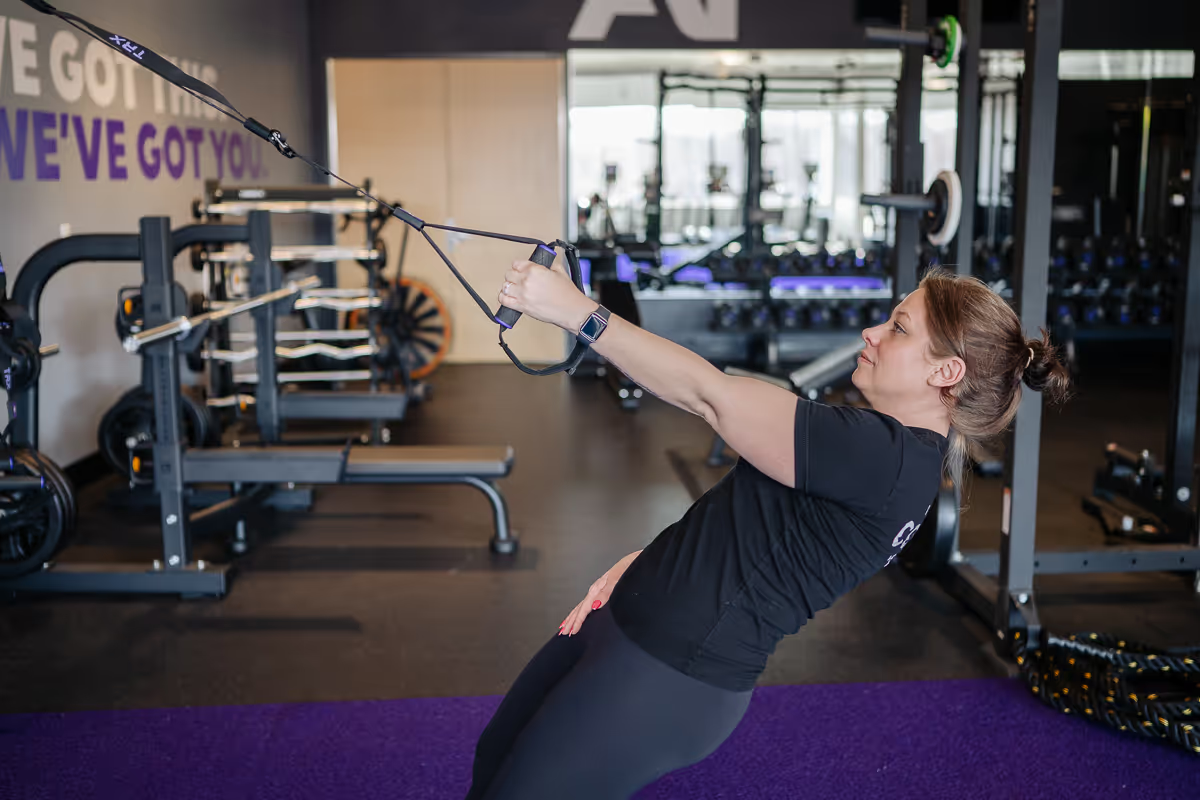
Form tips:
- Hold the TRX handle with one hand. Lean back until your arm is fully extended, keeping your legs and back aligned.
- Keeping your legs and back flat and the TRX strap taut, pull your body up until your elbow is bent at 90 degrees.
- Slowly return to the starting position.
Pull-up
Functional movement pattern: Vertical pull
Muscles worked: Latissimus dorsi (agonist), biceps, forearms (synergists), rotator cuff, transverse abdominis, glutes (stabilizers)

Form tips:
- Stand on a block or bench below the bar or rack.
- Grab the bar with your hands shoulder-width apart.
- Allow your body to hang from the bar with your arms fully extended.
- Pull upward to lift your chin above the bar, engaging your core and pulling your shoulder blades down. Aim to get your chin above the bar.
- At the top, slowly lower yourself down and return to the starting position.
Stability exercise: Single-arm TRX pull-up
Muscles worked: Same as traditional pull-up, plus core (rectus abdominis, obliques) and shoulder stabilizers (rhomboids, traps)
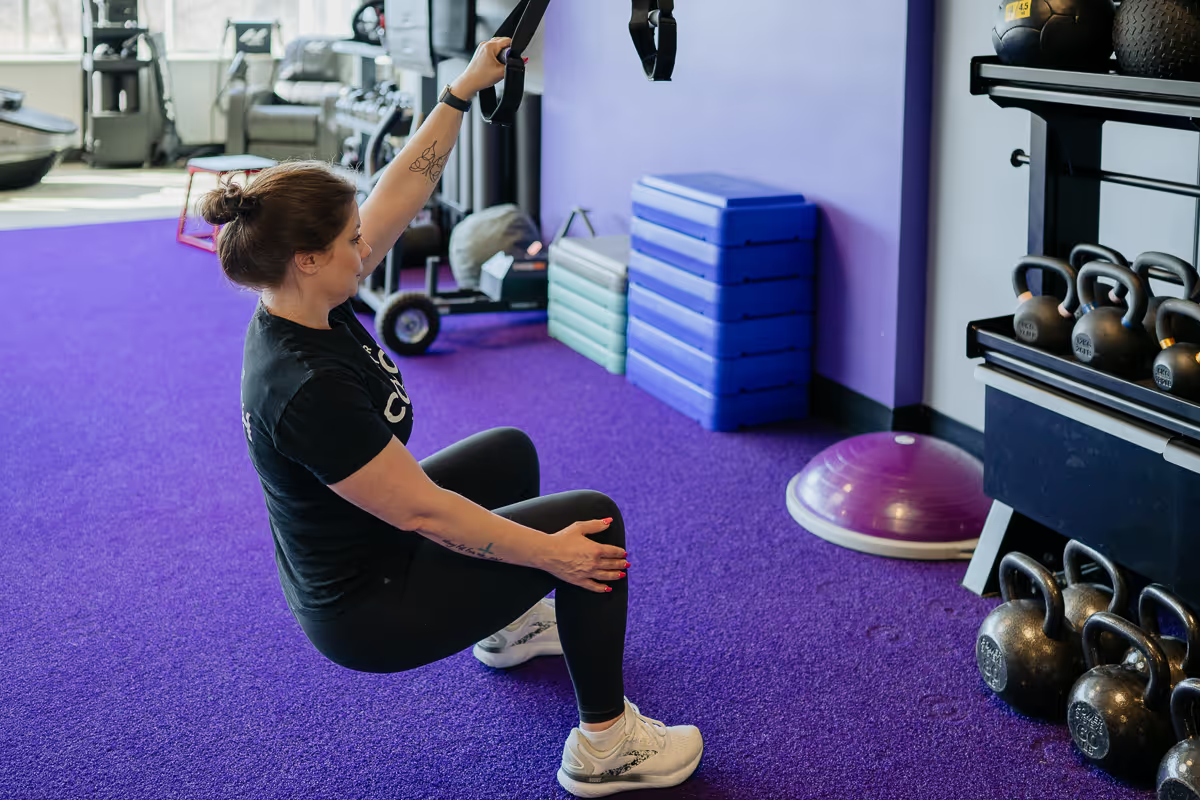
Form tips:
- Hold the soft TRX handle with one hand. Lower your body into a deep squat, bending at the hips and knees.
- Push through the balls of your feet to rise to a standing position, keeping the TRX strap taut.
- Slowly lower your body back to the starting position.
Barbell bench press
Functional movement pattern: Horizontal push
Muscles worked: Pectoralis major (agonist), triceps, anterior deltoid (synergists), rotator cuff (stabilizer)

Form tips:
- Be sure to raise or lower the barbell to a comfortable height before you begin. Lie on a flat bench, holding the barbell with a grip slightly wider than your shoulders.
- Unrack the barbell and keep your arms in a straight position. Avoid locking your elbows and keep your back flat against the bench throughout the movement.
- Bend your elbows to lower the weight to your mid-chest.
- Push the barbell back up to the straight-arm position.
Stability exercise: Single-arm dumbbell chest press
Muscles worked: Same as bench press, plus core (rectus abdominis, obliques) and shoulder stabilizers (rhomboids, traps)
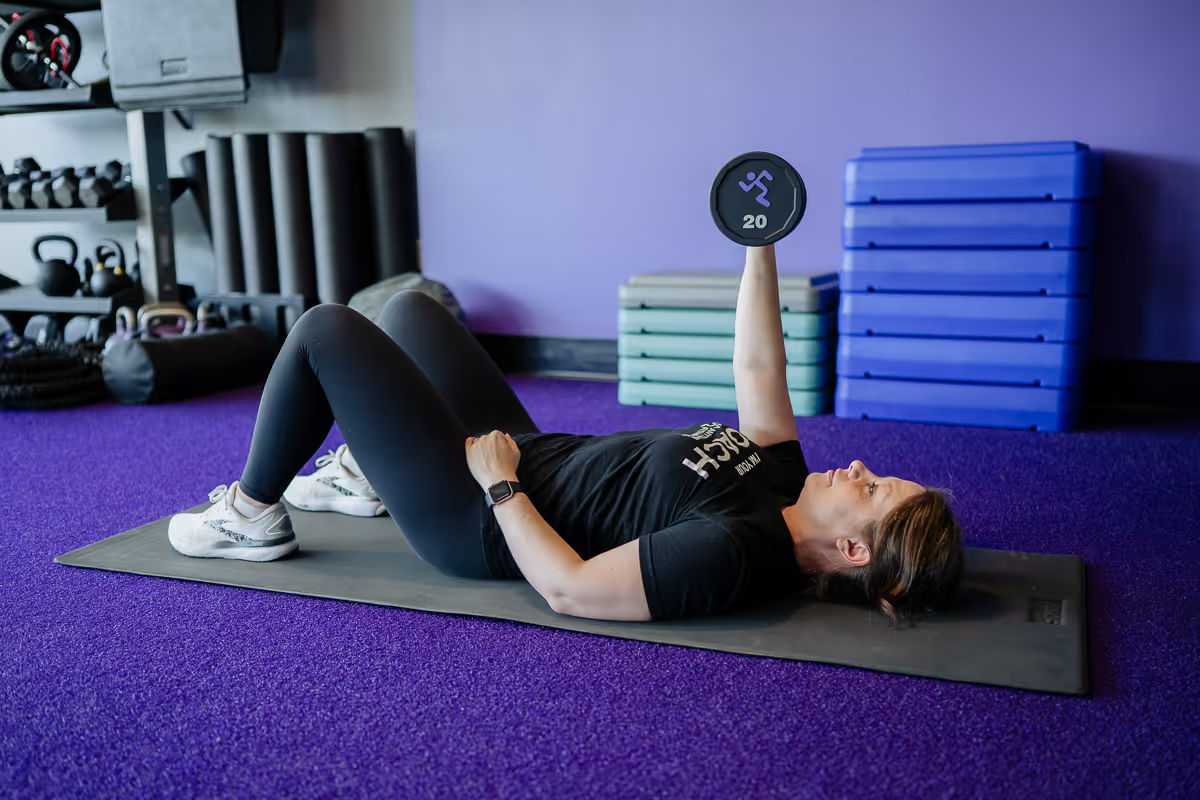
Form tips:
- Lie flat on your back with your knees bent and feet flat on an exercise mat. Hold a dumbbell at your side in one hand with your elbow bent at 90 degrees.
- Push the dumbbell straight up until it’s stacked above your shoulder.
- Slowly return the dumbbell to the starting position at your chest.
Dumbbell overhead press
Functional movement pattern: Vertical press
Muscles worked: Deltoids (agonists), triceps (synergists), rotator cuff (stabilizer)
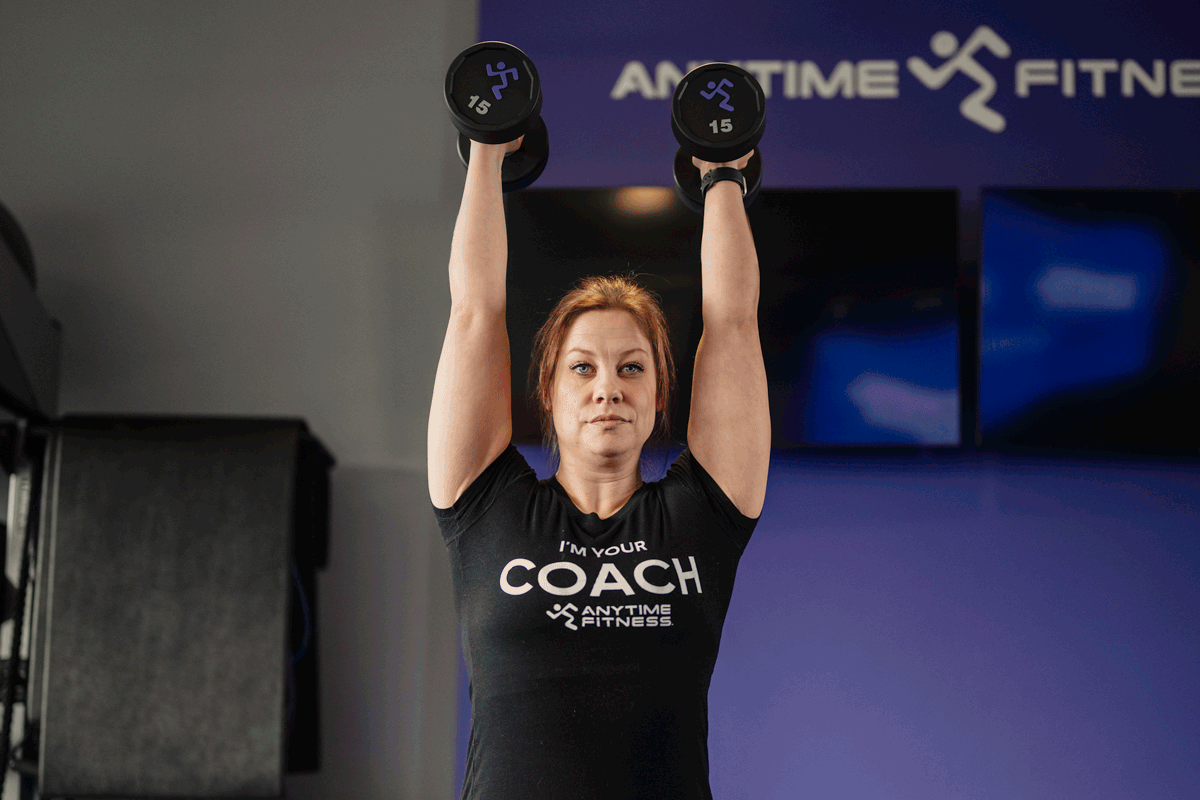
Form tips:
- Hold two dumbbells at shoulder height with your elbows bent and tucked into your body.
- Keeping your core braced and lower body steady, slowly press the dumbbells overhead, stopping when your arms are straight.
- With control, lower the dumbbells back down to the starting position.
Stability exercise: Stability ball seated single-arm dumbbell overhead press
Muscles worked: Same as dumbbell overhead press, plus core (rectus abdominis, obliques) and shoulder stabilizers (rhomboids, traps)
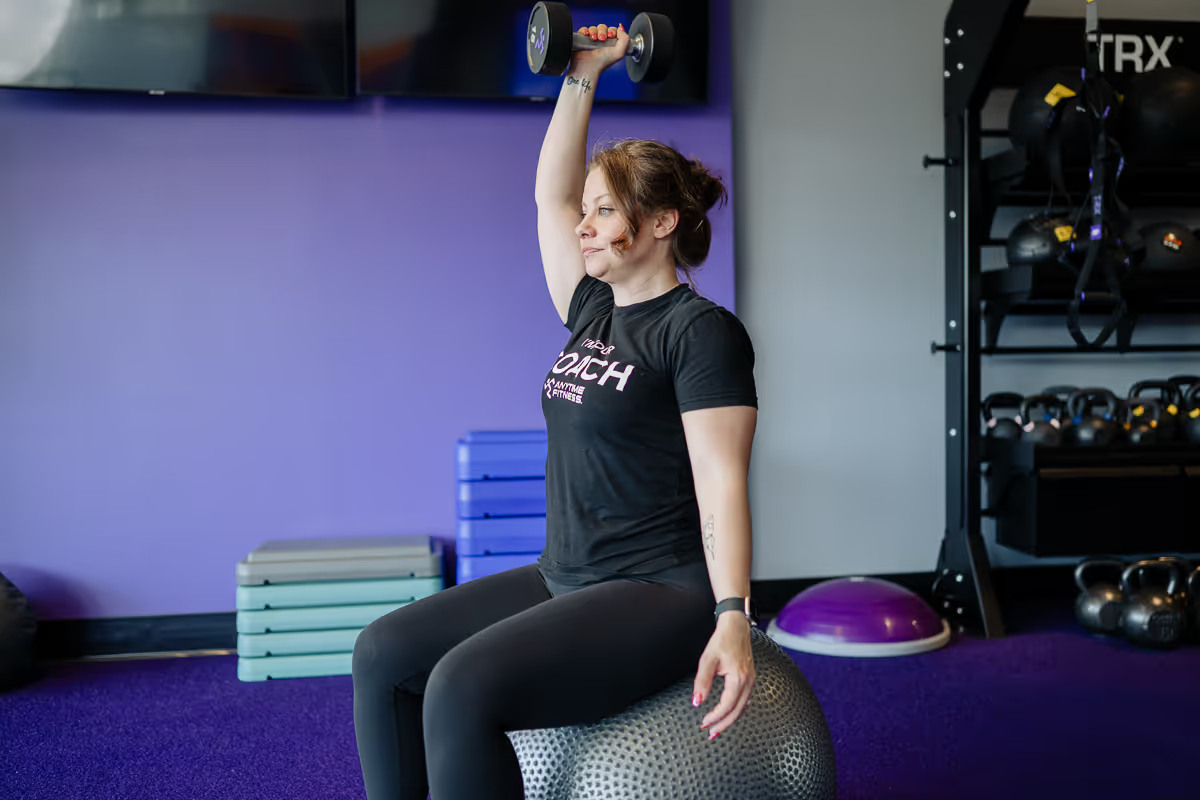
Form tips:
- Sit on a stability ball with your knees bent at a 90-degree angle and your feet flat on the floor. Hold a dumbbell in one hand at shoulder height.
- Press the dumbbell upward until your arm is straight and stacked above your shoulder.
- Slowly return the dumbbell to the starting position.
Safety tips for more effective compound workouts
Since compound movement exercises involve multiple muscle groups and joints, proper form and training are key to building strength and maximizing your results. Keep these tips in mind when you’re doing compound exercises:
- Brace your core. Your core is critical to adding stability in every movement — engage your core during compound lifts to make each exercise more efficient and prevent injury.
- Practice with lighter weights. Whether you’re trying a new movement or checking your form, practicing compound lifts with lighter weights helps your body build muscle memory and makes your lifts more effective.
- Incorporate stability and endurance training. Training your muscles through multiple modalities promotes muscular balance and prevents injury. Try these muscular endurance exercises and add the stability exercises to your workout routine.
- Learn how to breathe effectively. Breathing during daily life is automatic, but proper breathing during exercise may not be as intuitive. To make your workouts more efficient, exhale through the mouth during the concentric phase of an exercise (the “lifting” portion). Inhale during the eccentric portion of the lift (the “lowering,” or returning the weights to their original position).
Related: This Is How to Breathe Better for Peak Workout Performance
Add compound movement exercises to your workout routine for all-over strength
Whether you’re trying to kick your gym routine up a notch or looking for a more efficient total-body workout, compound exercises are an effective way to build muscle and strength for everyday life (and bigger PRs), or simply add challenge and variety to your routine.
Bonus: Our expert Coaches can work with you to incorporate compound movements into your workouts to maximize your time in the gym — and your results.
More strength workouts for you
- The Best Lower Chest Workout for Shape and Strength
- Push Day Workout: 5 Exercises for Stronger Arms and Chest
- The Best Pull Day Workout to Maintain Muscle Balance
- Upgrade Your Shoulder Workouts: 10 Exercises for Strength and Stability
- Cable Ropes: How to Strengthen Your Arms, Back, and Shoulders
A personalized training, nutrition, and recovery plan from our expert Coaches can help you optimize your routine and build lifelong strength. Connect with a Coach at your local Anytime Fitness to get started.
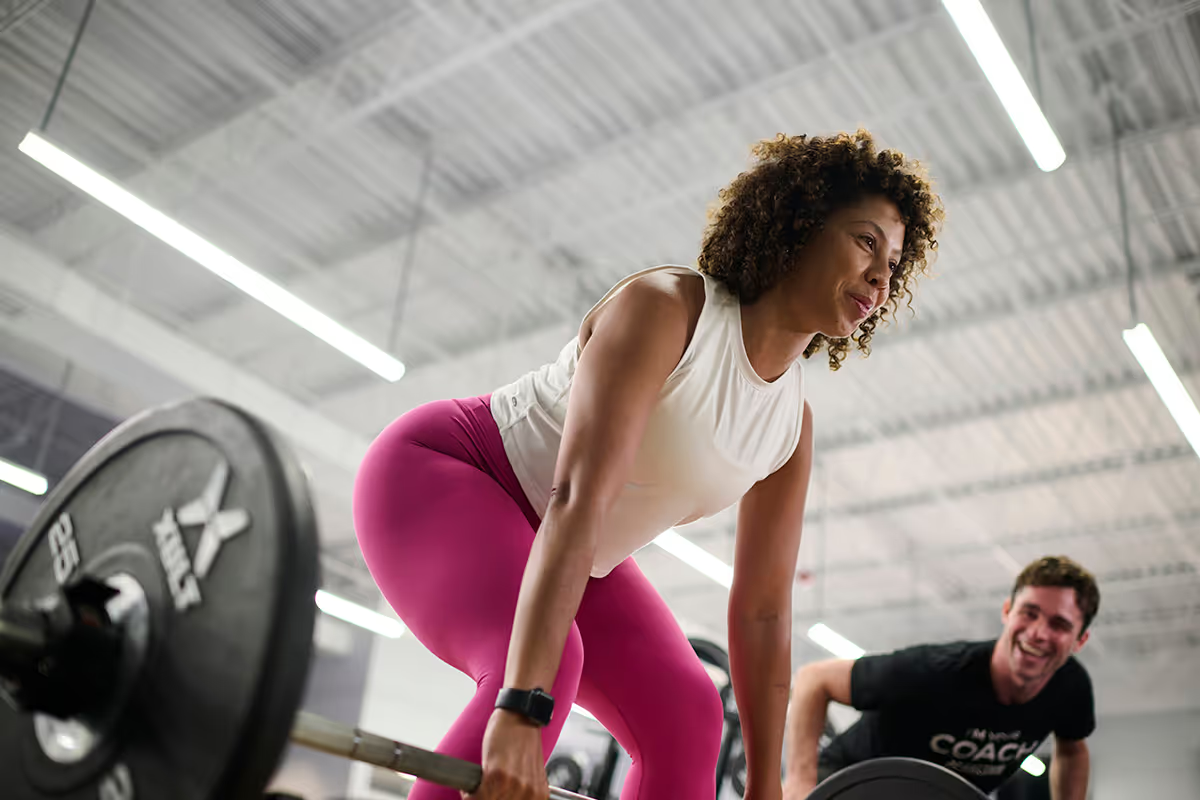



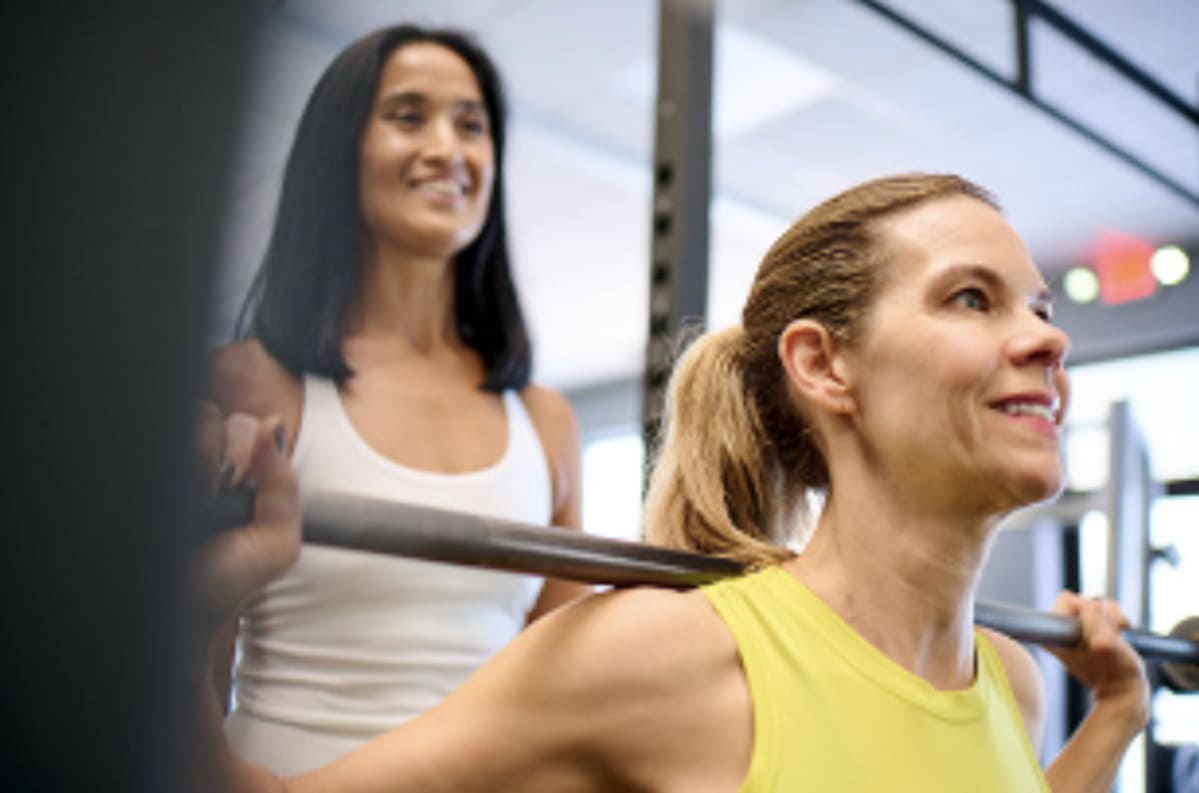
%20(1)%20(1).avif)
